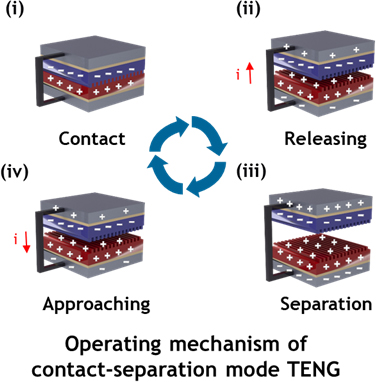- Energy Harvesting and Triboelectricity
We design energy harvesting systems and triboelectric nanogenerators (TENGs), which can produce electricity from mechanical kinetic energy.
-
Goal
-
1.
Design of energy harvesting systems and novel triboelectric materials for TENG
-
2.
Improving output performance of proposed energy harvesting systems based on TENG considering important factors:
surface roughness for an increase of effective contact area (micro-/nanopatterning, etching, and chemical treatment), dielectric constant, and interdigitated electrodes -
3.
Converting the wasted mechanical energy into electrical energy (renewable energy) for various self-powered applications (ocean energy harvesting)
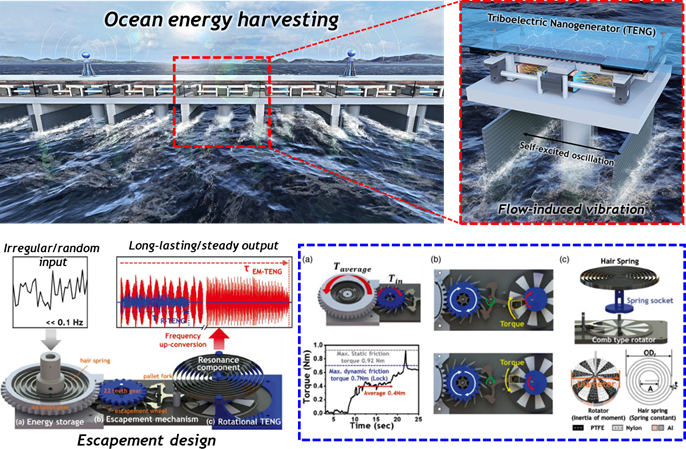
-
-
Approach
-
1.
Novel design of the TENG system adopting mechanical devices and mechanisms (e.g. escapement mechanism and flow-induced vibration)
-
2.
Electrical characterization of TENG devices: output voltage, current, power, etc.
-
3.
Parametric study for the design of the TENG system
-
4.
Demonstration of TENG devices for driving electronics including LED, clock, and sensor
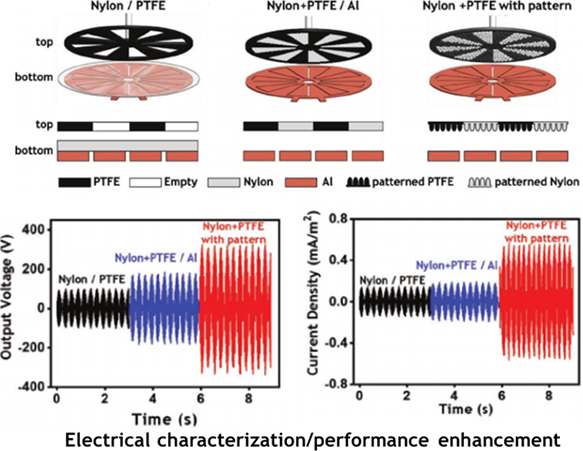
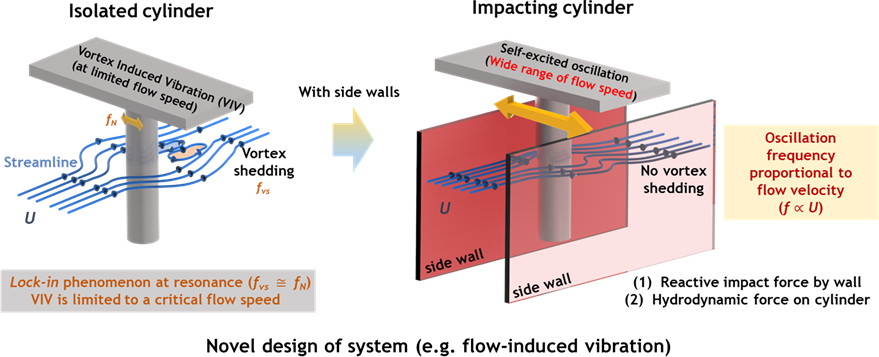

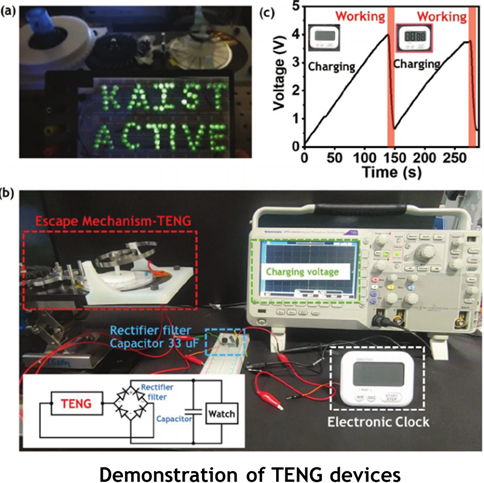
-
-
Selected Publications
-
1.
J.-S. Kim†, J. Kim†, J.-N. Kim, J. Ahn, J.-H. Jung, I. Park, D. Kim*, and I.-K. Oh*
Collectively Exhaustive Hybrid Triboelectric Nanogenerator Based on Flow-Induced Impacting-Sliding Cylinder for Ocean Energy Harvesting
Advanced Energy Materials, Vol. 12, Issue 3 (2022) Selected as inside front cover image
https://doi.org/10.1002/aenm.202103076 -
2.
J. Ahn†, J.-S. Kim†, Y. Jeong, S. Hwang, H. Yoo, Y. Jeong, J. Gu, M. Mahato, J. Ko, S. Jeon, J.-H. Ha, H.-S. Seo, J. Choi, M. Kang, C. Han, Y. Cho, C. H. Lee,
J.-H. Jeong*, I.-K. Oh*, I. Park*
All-Recyclable Triboelectric Nanogenerator for Sustainable Ocean Monitoring Systems
Advanced Energy Materials, Accepted (2022) Selected as back cover image
https://doi.org/10.1002/aenm.202201341 -
3.
K.-W. Han†, J.-N. Kim†, A. Rajabi-Abhari, V.-T. Bui, J.-S. Kim, D. Choi*, and I.-K. Oh*
Long-Lasting and Steady Triboelectric Energy Harvesting from Low-Frequency Irregular Motions Using Escapement Mechanism
Advanced Energy Materials, Vol. 11, Issue 4 (2021) Selected as front cover image
https://doi.org/10.1002/aenm.202002929 -
4.
M. Mahato†, J.-N. Kim†, R. Tabassian, A. Rajabi-Abhari, J.-S. Kim, S. Nam, H. Yoo, and I.-K. Oh*
Mutually exclusive ytterbium and nitrogen co-doping of mesoporous titania-carbon for self-cleanable and sustainable triboelectric nanogenerators
Nano Energy, Vol. 90, Issue B (2021)
https://doi.org/10.1016/j.nanoen.2021.106615 -
5.
J.-N. Kim†, J. Lee†, H. Lee*, and I.-K. Oh*
Stretchable and self-healable catechol-chitosan-diatom hydrogel for triboelectric generator and self-powered tremor sensor targeting at Parkinson disease
Nano Energy, Vol. 82 (2021)
https://doi.org/10.1016/j.nanoen.2020.105705
-
-
What is triboelectric nanogenerator?
Triboelectric nanogenerator (TENG) is an energy harvesting technique based on the synergetic effect of triboelectrification and electrostatic induction. For low-frequency mechanical movements such as waves or human motion, the energy conversion efficiency of TENG is generally higher than that of the existing electromagnetic generator (EMG). Also, its applicability as a next-generation energy harvesting technology has been recognized due to its versatility of material selection, simple manufacturing process, and extremely low cost. TENG can be utilized for self-powered and portable electronics or ocean monitoring sensor networks that require periodic battery replacement in harsh environments, and it can supply power continuously without replacing the battery.
Key issue discussed in TENG research is performance improvement through the mechanical/chemical treatment of the friction surface such as: (1) surface roughness (micro-/nanopatterning, surface plasma etching); (2) chemical treatment (electronegativity/electron donor property); and (3) design of a novel mechanical system to effectively harvest external mechanical movements.